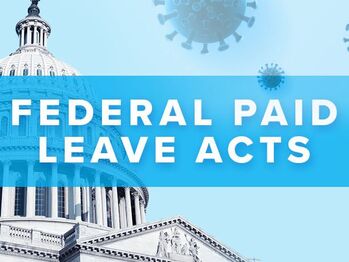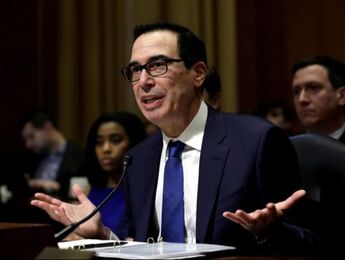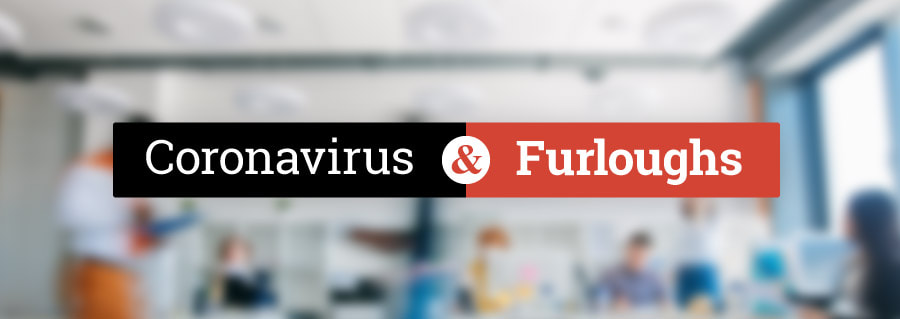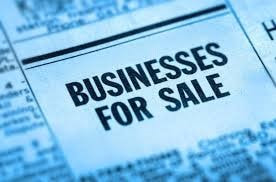TJ Agresti, JD, LLM, CAMFounder and President Archives
February 2021
|
Back to Blog
The economy is starting to open and business leaders need to plan their rehire policies. I crafted a rehire policy that addresses many of the issues that must be addressed when bringing back a terminated or furloughed employee. I am also making a recall letter template available which outlines the formal communication advising an employee that they are being invited to return to work.
0 Comments
Read More
Back to Blog
The Federal Reserve’s new Main Street Lending Program is another chance to secure much needed cash now. The $349 billion Paycheck Protection Program, or PPP, ran out of money 14 days after businesses across the country submitted the first applications. The SBA shut down its application process and ceased enrolling new lenders into the program. Many businesses were left in shock not knowing what to do when the PPP ran out of money. Some businesses are still applying and even getting recommendations from their banks to continue with the process. Some completed their applications before the money ran out and were waiting for their approval. It appears that political survival and the necessity to further prop up the economy forced Congress to approve additional PPP funding. Treasury Secretary Steven Mnuchin told CNN on Sunday 4/19/2020 that he's hopeful that a deal could be reached as early as Sunday to replenish a tapped-out small-business loan program and that the deal would include additional funding for hospitals and testing. "I think we're making a lot of progress," Mnuchin said on Sunday, noting that he has had multiple conversations with Senate and House leadership in recent days. He later added, "I'm hopeful we could get a deal done today. "The Senate could approve the measure as early as Monday and the House on Tuesday. Mnuchin said the agreement so far would include $300 billion for the Paycheck Protection Program, which funds small-business loans during the crisis. On March 21, 2020, the Washington Post is reporting that Senate Minority Leader Charles E. Schumer said Tuesday that lawmakers and the White House have reached a nearly $500 billion deal to replenish a small business lending program slammed by the coronavirus and boost spending on hospitals and testing. “We have a deal and I believe we’ll pass it today,” Schumer (D-N.Y.) said on CNN. Read more at the Washington Post The new package includes $310 billion for the PPP, with $250 billion refilling the program and $60 billion set aside specifically for smaller institutions like credit unions and community banks. That latter $60 billion is key in getting funds to smaller banks and lenders (according to the bill, $30 billion to institutions with between $10 billion and $50 billion in assets, and the other $30 billion to institutions with less than $10 billion in assets). Business who missed out on the first round of thee PPP loan program should not hesitate to submit an application. The fund will be exhausted rapidly based on Lenders are warning their customers they might not be able to secure loans even if Congress provides an additional $300 billion as soon as this week. Banking industry representatives say the program has a burn rate of $50 billion per day and needs closer to $1 trillion to meet demand, with hundreds of thousands of applications pending. "This is going to go within, at most, 72 hours," said Consumer Bankers Association President Richard Hunt, who represents large banks. "But the odds are more like 48 hours." Unfortunately, many small businesses will not obtain a PPP Loan and will not survive. For some companies who need $1 million or more, one possibility is the Federal Reserve’s new Main Street Lending Program. The Main Street Lending Program functions more like a traditional SBA loan program. There is no forgiveness of loan option like the PPP (tied to utilizing the funds for payroll). The program opened to companies with up to 10,000 employees and is run directly by lenders. It will provide support for up to $600 million of loans. The key Main Street Lending terms terms are:
For businesses that meet the requirements of the Main Street Lending Program, it is an alternative worth taking a look at with interest rates that may never be this favorable again. Time is of the essence for for the rest of the small businesses that make up 45.% of the U.S. economy. Get your PPP Loan applications in today!
Back to Blog
New Wholesale Model Could Shake Up Airline Distribution Thanks to American Airlines Test With Sabre4/19/2020 Under the wholesale model, the airline, not the global distribution system, pays the travel agency an incentive. The travel agency pays the global distribution system a fee for each booking made via the reservation system, which the tech companies run.
The wholesale model can save airlines money. Read the full article at https://finance.yahoo.com/news/wholesale-model-could-shake-airline-153026033.html
Back to Blog
Back to Blog
Buy-Sell Agreements - I need to know4/18/2020
Back to Blog
Back to Blog
What Business are Asking About Today 4/18/2020
Back to Blog
New Paid Leave Requirements4/18/2020  Employers should be aware of newly enacted legislation—the Families First Coronavirus Response Act (“FFCRA”)—that imposes obligations on many employers to provide temporary paid family and sick leave to employees directly impacted by the COVID-19 pandemic. President Trump signed the law on March 18, 2020.
Back to Blog
Job loss often ranks among the highest in stress on a list of life-altering events such as a death in the family, divorce, and serious illness. It can have a profound effect on the well-being of your employees. But uncertainty that comes with being furloughed and not knowing if you’ll be asked to return to work is proving to be even worse for employees' mental health than other life-altering events.
What you say to employees during a crisis will affect your ability to rehire them and retain them later.
Back to Blog
Cash Is King But Don't Be A Sucker4/16/2020 Private Investors Have An Abundance of Cash and Want to Invest - Be Prepared or Be Taken Advantage Of
"It is well known that small businesses are a critical driver of economic growth, but the consistency of their growth is in question if they're living month to month," Diana Farrell, president and CEO of the JP Morgan Chase Institute, said in a statement. Now, it's becoming apparent that the amount of cash sitting on the sidelines waiting for the right moment is even larger than the last time. The targets will be stressed business that may be running out of cash.
While we still do not know the depths our economy may go to during this "Great Social Distancing" we do know that the government will do whatever is necessary to avoid depression like economics and provide an opportunity for a swift recovery. At least that is the intent, otherwise 22 million unemployed Americans and counting don't go back to work. We end up with 10% plus persistent unemployment, an enormous national debt and a stagnated economy creating the real possibility of sovereign debt default or a currency devaluation event (but this is another topic). Whether the current stimulus package will succeed or not is yet to be seen but there is enough support for a vaccine within a year and therapeutic treatment before that to create optimism for a faster than normal recovery from the depths of the current crisis. Now is the time to engineer your financial plan for the recovery using income models based on the best case of rapid recovery, the worst case of extended recovery and something in the middle that resembles a start stop approach to the recovery of economic activity. The intermittent activity model accounts for the likelihood of waves of social distancing that might occur until a widely available vaccine or therapeutic drug is available. A key part of the financial plan is a solid optimistic valuation model that will be the basis for any negotiation with a private investor. Valuation is the determining factor of percentage ownership you have to give up to get the capital you need to support your recovery business model. Additionally, private investors want a clear picture of how they get their capital back with a multiple of yield over a given period of time. You must have a viable exit strategy built into your financial model which tracks the valuation adjustment over time as your business recovers and grows. The realization event for the new valuation may be a merger, sale or IPO. Private capital is available to rescue your company and support a relaunch but don't be taken advantage of by a lack of preparation. Questions to Ask
|
|
Privacy Policy
Cookies policy Terms of Use Disclaimers © 2013 - 2024 Critical Mission Consulting LLC All Rights reserved |


 RSS Feed
RSS Feed








